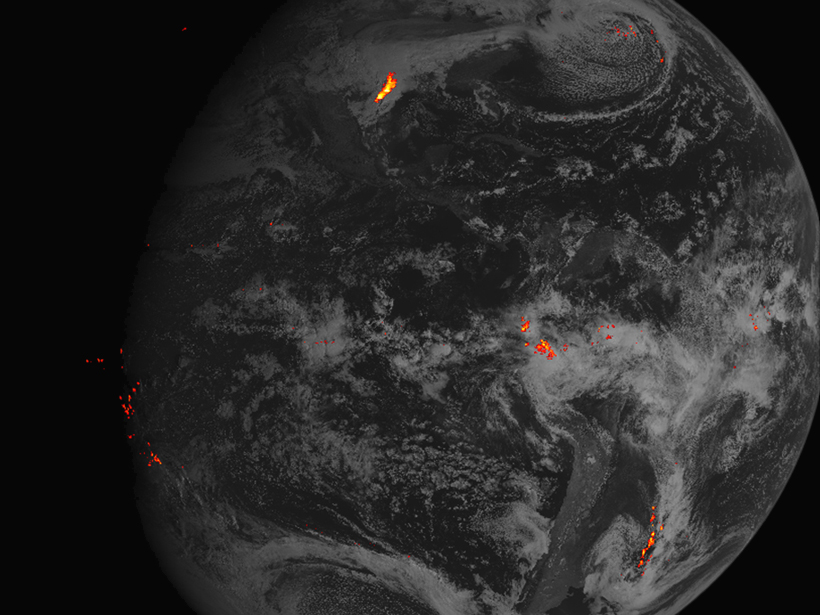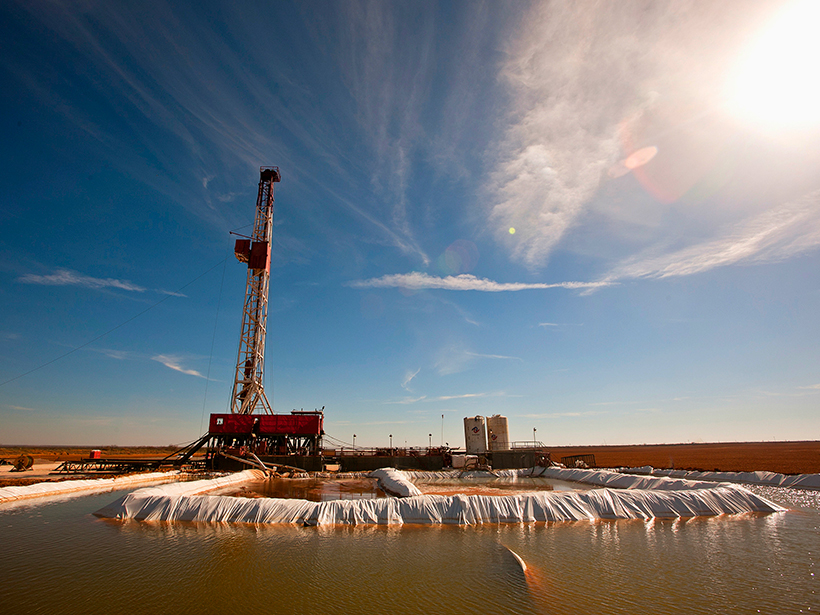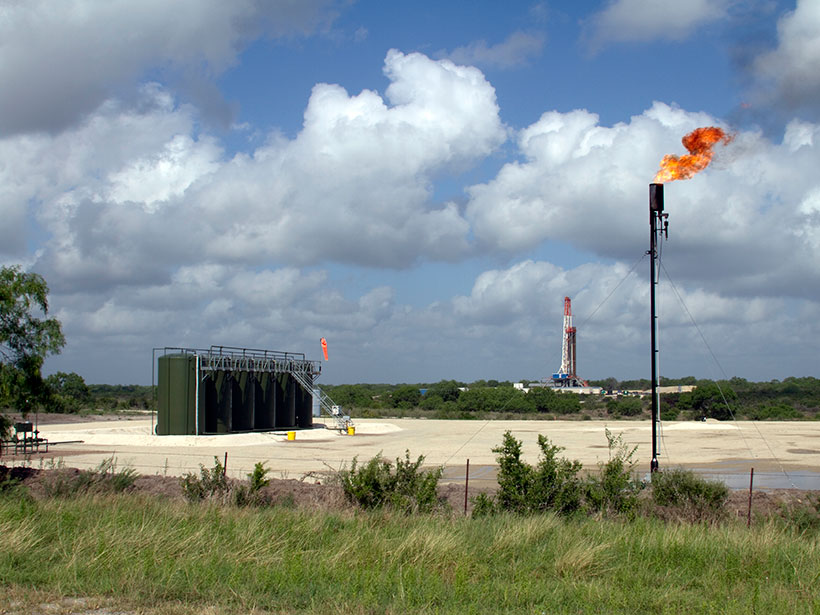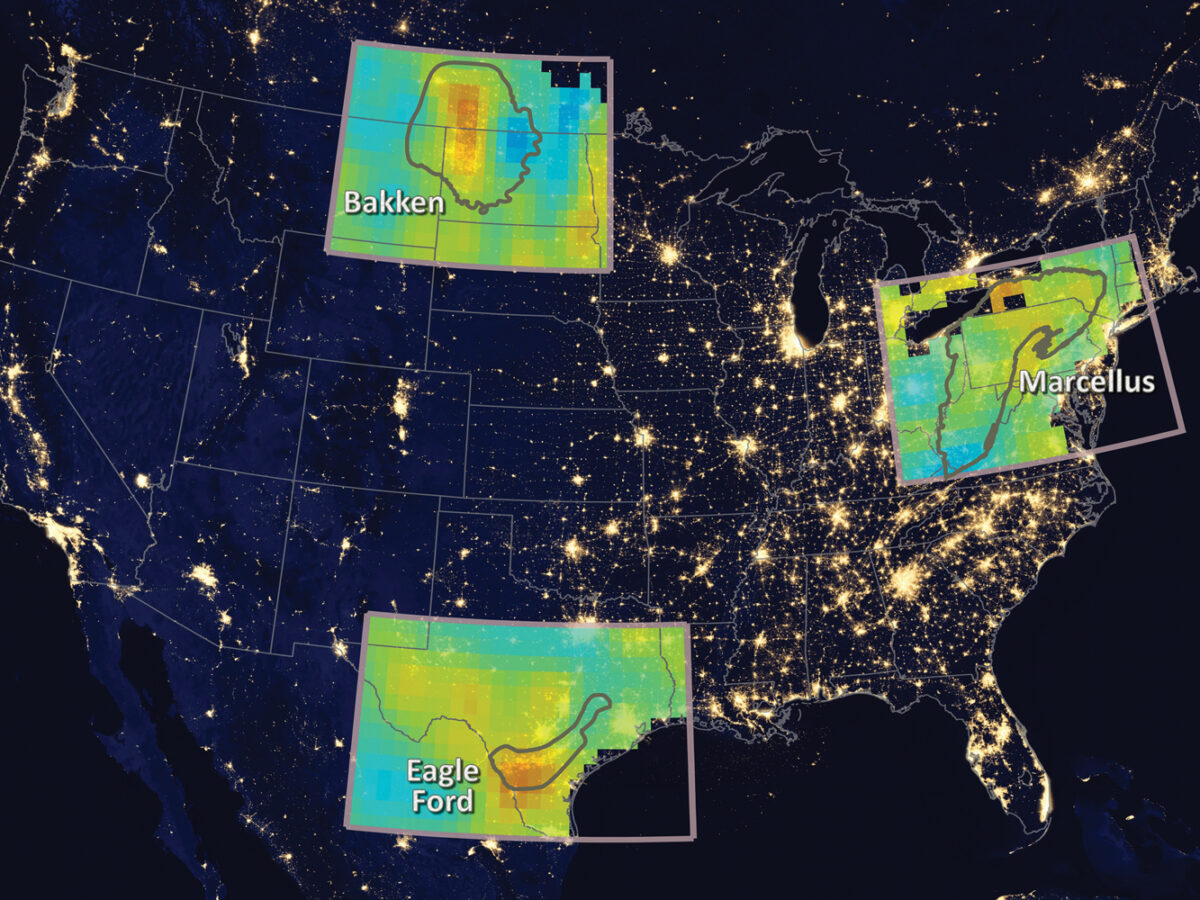The satellite's lightning mapper instrument will help scientists forecast extreme weather.
Texas
Largest Ever U.S. Shale Oil Deposit Identified in Texas
The Wolfcamp shale, which underlies a large swath of Texas roughly centered on the city of Midland, contains 20 billion barrels of oil that could be recovered with current technology.
Are U.S. States Prepared to Manage Water in a Changing Climate?
An empirical study of water allocation and planning in five states concludes that they lack a statewide strategy to manage the impacts of climate change on water resources.
Satellites Track Chlorophyll Fluorescence to Monitor Drought
New satellite observations show connection between solar-induced chlorophyll fluorescence and soil moisture—a key mechanism behind drought onset.
Is the Shale Boom Reversing Progress in Curbing Ozone Pollution?
Concentrations of volatile organic compounds—precursors to ground-level ozone formation—are on the rise in areas over and downwind of a major shale oil and gas field in Texas.
Methane Leaks from Oil and Gas Fields Detected from Space
Methane hot spots were detected in the atmosphere near North Dakota’s Bakken formation and the Eagle Ford formation in Texas after oil and gas production ramped up starting in 2009.





